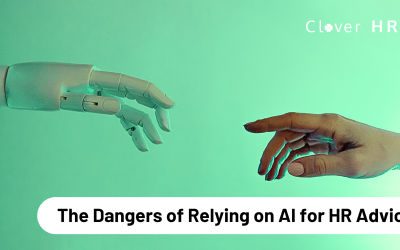What is diabetes?
Diabetes is a chronic metabolic disease, which over time can lead to serious damage to the heart, blood vessels, eyes, kidneys and nerves.
Diabetes is characterised by elevated blood glucose levels.
There are 2 main types of diabetes:
- Type 1 Diabetes;
This is an autoimmune disease that causes the insulin-producing beta cells in the pancreas to be destroyed which stops the body from being able to produce insulin.
- Type 2 Diabetes;
This is mainly lifestyle-related, where there is too much sugar in the blood resulting in the body not using insulin well.
There are about 8% of people in the UK with type 1 diabetes. Type 2 diabetes is the most common type of diabetes. However, there can be a lot of confusion between the two types due to a lack of knowledge on the illness.
The risk of developing Type 1 diabetes is not affected by lifestyle or diet, it is a genetic condition where the body attacks the cells in the pancreas which stops it from producing insulin.
The risk of developing Type 2 diabetes can be lowered through healthy eating, exercise and maintaining healthy body weight as this type of diabetes is triggered from an unhealthy lifestyle.
Type 2 diabetes can be reversed if a healthy diet is followed.
Type 1 diabetes is not reversable, however, there are lots of studies being done to look into ways of getting the pancreas to produce insulin again and progress is being made on potentially finding ways for the pancreas to restart producing insulin.
Pregnancy and Diabetes
Pregnant women can develop a condition which is known as gestational diabetes during pregnancy. Gestational diabetes is where the body is unable to produce enough insulin to absorb any higher levels of blood glucose. The condition usually goes away shortly after the baby is born, but the mother then has a greater chance of developing type 2 diabetes in the future.
Symptoms of Diabetes
The most common symptoms of diabetes are:
- Needing to urinate a lot, especially at night
- Being very thirsty
- Feeling more tired than normal
- Weight loss
- Cuts and wounds taking longer to heal
- Blurry vision
These symptoms are common in both Type 1 and Type 2.
Type 1 diabetes can also be known as juvenile diabetes as it is usually diagnosed in children and young adults, however it can appear at any age.
Risk of Hypos and Hypers
People with diabetes are at risk of having what are known as a hypo and a hyper.
A hypo (Hypoglycaemic) is when the blood glucose levels drop too low
A hyper (Hyperglycaemia) is when the blood glucose levels are too high
Employers should talk to their employees to find out how they are affected by hypo’s and hyper’s, so they can know the warning signs to look out for and more importantly know how to get the employee the help they need if they are suffering from either a hypo or a hyper. Diabetes can be a life-threatening condition and it is vital the person receives the relevant treatment as soon as possible.
Possible symptoms of Hypos’s and Hyper’s
It is very important to remember that it is not one size fits all when dealing with diabetes and the symptoms related to it. Some people will react completely different to others with the same condition, however the most frequent symptoms of hypo’s and hyper’s are listed below:
Hypo’s Hyper’s
Feeling Hungry Thirst or dry tongue
Tiredness Tiredness, sleepiness
Shaking Needing to urinate frequently
Sweating Quick temper or moodiness
Pale looking Headache
Palpitations/pounding heart Redness
Tingling or numbness of lip, tongue or fingers Concentration issues
Muscle weakness Cloudy vision
The Law and Diabetes
One in six employees with diabetes feel they have been discriminated against by their employer because of their condition.
The two areas of law that relate to diabetes are:
- The Equality Act 2010, which protects employees against discrimination, specifically in this case disability discrimination.
- The Health and Safety at Work Act 1974, which says where reasonably possible an employer must ensure health, safety and welfare at work.
For the purposes of the law, diabetes is nearly always covered by the Equality Act 2010 or the Disability Discrimination Act 1995.
Diabetes is a long-term condition that can have an adverse effect on a person’s ability to carry out their day to day activities if their blood glucose levels are not under control.
Therefore, the legislation requires employers to make reasonable adjustments to enable employees with diabetes to carry out their role alongside managing their condition.
This includes things such as:
- Ensuring the employee can have breaks at certain times, as diabetes can mean needing to eat at set times.
- Changing lunch timings to be able to eat at the same time every day rather than having staggered times.
- Adjusting working hours where required.
- Allowing the use of mobile phones, if possible, for employees to monitor blood glucose via CGM (Continuous Glucose Monitoring).
- Ensuring there is a safe place for medication to be kept and privacy to do insulin injections.
How can diabetes affect employees at work?
How employees are affected by their condition will vary from person to person, however, the majority of people can successfully manage their diabetes themselves and usually this does not create them any issues in the workplace.
People with diabetes may need to take their medication at set times of the day or to eat at specific times. They usually have to take their blood glucose levels periodically throughout the day and also may need to have insulin injections.
Employees may feel embarrassed or awkward doing this, especially in front of others, so employers have a duty of care to provide a quiet place this can be done. In the toilets is not a suitable place to expect employees to do injections or readings.
What employers can do to support?
It is very important that employees who have diabetes should not be discriminated against due to their illness, as long as their condition is managed, there is no reason they wouldn’t be able to perform the same as someone without diabetes.
Employees should be comfortable in their workplace and be fully supported by their employers.
There are various ways and employer can support employees with diabetes. These include:
- Talk to employees to find out their specific support or care needs and learn what the signs to look out for are. For example, if they are having a hypo, find out what help they would require in this situation.
- Ensure an employee’s emergency contact details are up to date.
- Provide a safe place for employees to administer insulin injections and to check blood sugar or ketone levels.
- Support employees with any medical appointments – such as eye tests, GP or hospital visits as these dates and times usually will be out of the employees’ control, these appointments shouldn’t go against an employee’s attendance record.
- Talk to the employee about their colleagues knowing about their condition as if they do not wish others to know, this must be kept confidential and on a strict need to know basis.
- Ensure the employees manager and first aiders receive relevant training to deal with medical emergencies.
- Listen to your employee to learn how to help them, as they are the experts at knowing what to do as they live with it every day.
Managing absences
All employees require time off work when they are not well or for medical appointments.
Having diabetes doesn’t mean that you are more likely to become ill. However, someone with diabetes will require to have regular check ups with their specialist to ensure they are getting the best possible care and treatment.
Absences due to diabetes need to be managed in a supportive and sensitive way, in line with a company’s sickness absence procedure.
Diabetes very often will be classed as a disability for the purposes of employment legislation, so it is vital that employers follow the correct procedures, and obtain professional advice if there is any doubt about what to do.
If the Company has an occupational health scheme, it may be beneficial to refer an employee to occupational health, depending on what support or assistance an employee needs.
Further information on diabetes can be found on https://www.diabetes.org.uk/


